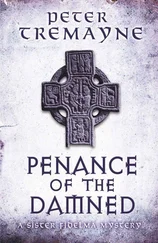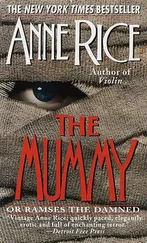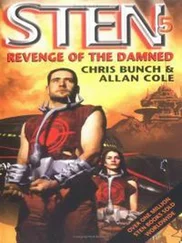“God a-mighty,” he said. “You know, I cocked that thing when we came ashore this morning, and never did uncock it.”
For the next three nights we slept in the open. Our mortars were set up on a rocky hillside overlooking the beach, which was a fine place for swimming. A few swam out to the destroyer escort, which was anchored just offshore, and enjoyed the Navy’s hospitality. Then, without explanation, the amtracs took us back to Okinawa, where we resumed our patrols.
With the Marine fighters onshore, things started getting interesting overhead. In my time overseas, I’d never seen planes tangle in dogfights before. On New Britain, there was so much jungle you couldn’t see the sky most of the time, and during our time on Peleliu, the Japs had never been able to put a single plane into the air.
But on Okinawa the country was open, and we were close enough to Japan that they could fly in, fight, and then turn around and fly home. So we witnessed several dogfights, right over our heads. They were awesome.
Often they were so high you couldn’t tell which planes were enemy and which were ours. They were just specks circling around up there. Then you’d see one get shot out of the air, and a wing would come spiraling down, or chunks of metal burning and trailing smoke. We’d just stand there staring upward.
On April 13, they passed the word along the lines that President Roosevelt had died the day before. It was a shock. Most of us hadn’t spent much time thinking about events back home, what was going on in Washington and so forth. I guess we just assumed when we got back home he’d still be president. None of us knew a thing about this new man, Harry Truman.
I remember the day because that morning a Jap plane had come in low over our positions, treetop level. You could almost see his eyeballs. I thought, Oh, shit. He’s after somebody. And just as I was thinking that, here came one of our Corsairs right on his tail. You could see the Marine pilot just as clearly. He was looking straight ahead, hunched over slightly. He hadn’t started firing yet, but he was moving faster than the Zero. They disappeared behind the trees and I didn’t get to see how it turned out. But I’d be willing to bet money that Marine caught him. And if he didn’t catch him, somebody else did. Little by little we started to see fewer Jap planes.
Except for the dogfights, K Company had been on Okinawa almost a month now without seeing any combat. We’d been roaming the countryside, going out on patrol. Sometimes we’d just go out on our own, poking around farmhouses looking for chickens or pigs. Anything to relieve the monotony of K rations.
Toward the end of April I went out on my own to see what I could scare up. I came to this farmhouse with a shed built onto the side. The shed was about twenty feet long and six to eight feet deep with a door in front. It looked like the kind of place you might keep chickens, so I opened the door and went in. There was a ragged pile of pine limbs stacked near the door and I reached down and kind of shook one, hoping to scare up a chicken. And this man popped up instead.
You talk about West Texas quick-draw. The flap of my holster was down and snapped, but in one split second I had my .45 out and in that guy’s face.
Then I saw that he was a civilian, an Okinawan. He just bowed, and bowed again and came out from behind the woodpile. I’m not sure which one of us was more startled. I patted him on the shoulder and bowed myself and left him standing there. I don’t know where he went after that, whether he crawled back behind that woodpile or went somewhere else.
It was a nice farmhouse, wood frame, well kept. I don’t think the Okinawans were happy to see us in the beginning. The Japs had kind of brainwashed them to think we were barbarians. But after they were in contact with us, word spread that we were okay. That we weren’t the barbarians. The Japs were.
* * *
Our question—Where are the Japs?—finally had an answer.
Before we landed, most of them had been withdrawn to the southern third of the island, where they waited in caves and tunnels for us to come to them. Their guns were aimed and ready. It was the kind of last-ditch defense they had waged on Peleliu.
While the Marines were securing central and northern Okinawa, the Army’s divisions started south. The farther south they got, the more opposition they ran into until they were fighting their way ridge to ridge. The Japs had established a defensive line across the island. On April 18, the Army staged a major attack. We sent an artillery regiment to support them. Then in a disastrous clash the Twenty-seventh Division lost twenty-two of its thirty tanks. The tanks and the supporting infantry had become separated, violating the cardinal rule of tank warfare. The attack stalled out and the First Marine Division’s tanks had to be sent in as replacements. Then at the end of April the entire First Marine Division was ordered to replace the Twenty-seventh on the east end of the line. For the first time on Okinawa we were being thrown into battle.
On May 1 trucks took us south along muddy roads and across swollen streams. The thunder of artillery grew louder. We passed big guns and piles of empty shell casings.
For us Marines, the Twenty-seventh Division didn’t have that great a reputation to begin with. They were a National Guard outfit from New York. On Saipan the division had failed to move forward during a Marine advance, and Marine General Holland “Howling Mad” Smith raised hell and got its commander replaced.
We piled out of the trucks in driving rain and started forward single file. Soon we encountered the sorriest bunch of soldiers coming our way I’d ever seen. They were what was left of the 106th Regiment of the Twenty-seventh Infantry Division, and they were exhausted, dead on their feet. In the days before, they’d fought their way to the top of the ridge and been thrown off. The next day they’d fought their way back up and been thrown off again. They were just getting the hell beat out of them when we relieved them.
As we were passing them, I witnessed an event that told me a lot about the outfit. One of their sergeants ordered a soldier to do something.
“Fuck you,” the soldier snarled. “Do it yourself. I’m not doing it.”
I don’t recall what it was the sergeant ordered him to do. But I can sure tell you what would happen to a Marine who said that to his sergeant. He’d find himself toothless and in the brig. He didn’t belong on the front line. There was no discipline whatever in the outfit, so far as I could tell. We thought they were the pits.
That day we fought our way to the top of that ridge. And we stayed there.
We got off the road and approached double time across an open field. Jap artillery had us zeroed in, or maybe they were firing at the 106th Regiment, which was still withdrawing. Shells were going off everywhere, and as we got closer, machine-gun and rifle fire joined in. The ground sloped upward, and we spread out to present a scattered target. Soldiers were still streaming by. It was the worst pounding we’d received since the airfield on Peleliu. Corpsmen were busy everywhere.
Just behind the crest of the ridge I yelled, “Hit the deck and dig in!” Our own guns were tossing shells across the top and, we hoped, into the Jap positions beyond.
We waited in our foxholes through the night, and the rain started up again, adding mud to all our other miseries. Word was passed along that next morning we’d begin moving southward, pushing the Japs back.
We awoke to a cold, gray dawn. Some of us tried to heat our coffee over a Sterno can. The rest huddled in their ponchos. At nine a.m. our artillery started firing across the ridge again, and the Japanese answered. But their shells were falling some distance behind us. I got word to start firing the mortars, and all along the line the tempo picked up. The rain also picked up, and Sledge and the other ammo carriers were slipping and sliding around in the mud, trying to get shells to the guns as fast as we could fire them. The Japs were somewhere on the far side of the ridgeline. I moved up front with the riflemen, where I could observe. But it was impossible to get a clear picture of what we were firing at. There were a couple of our snipers with me. Whenever they fired three or four shots, we’d have to move because Jap artillery would pick up on us.
Читать дальше











